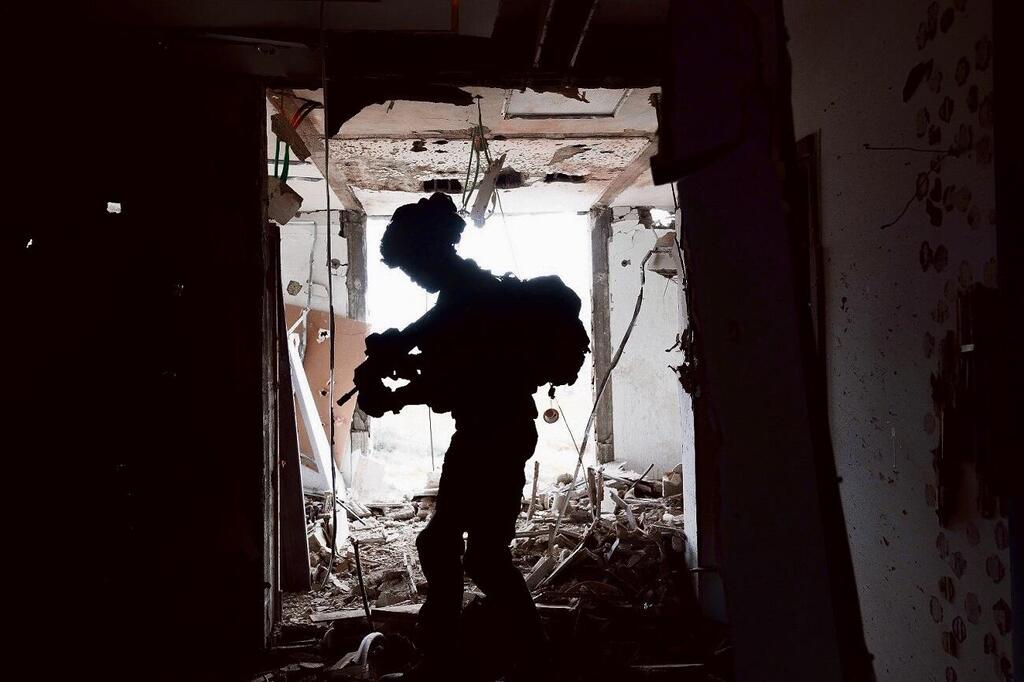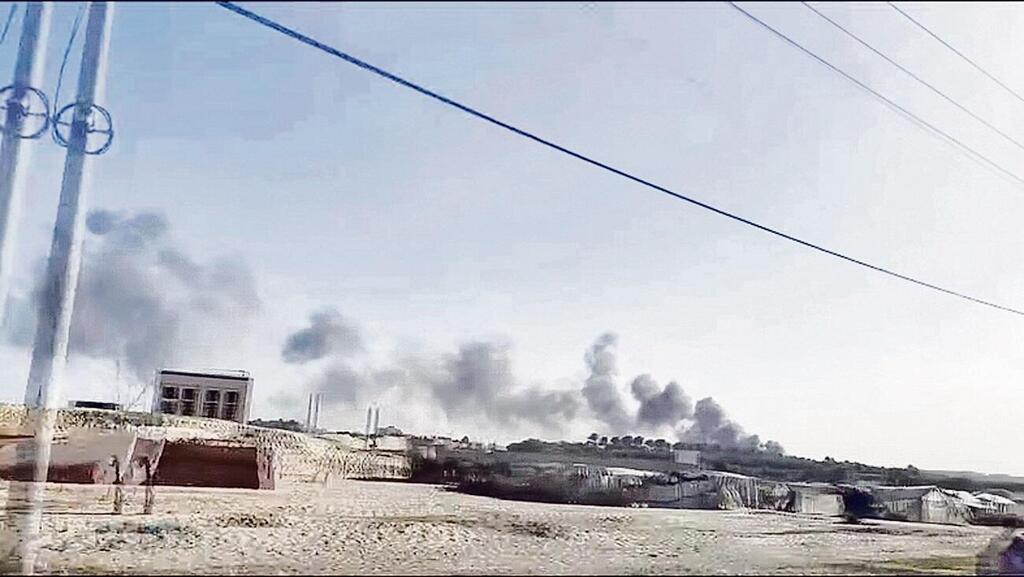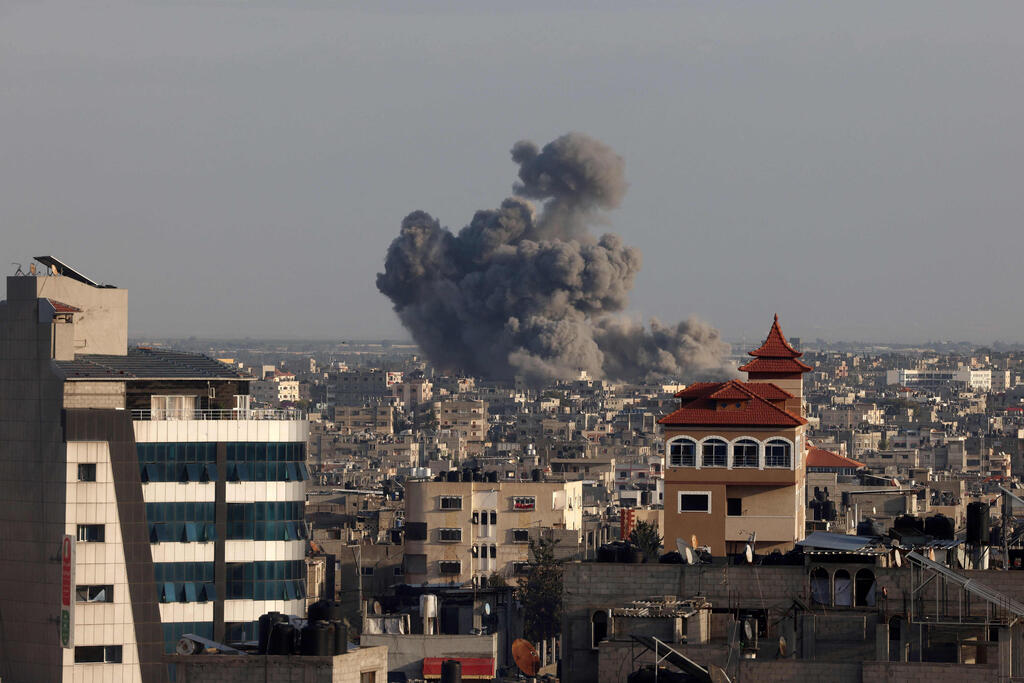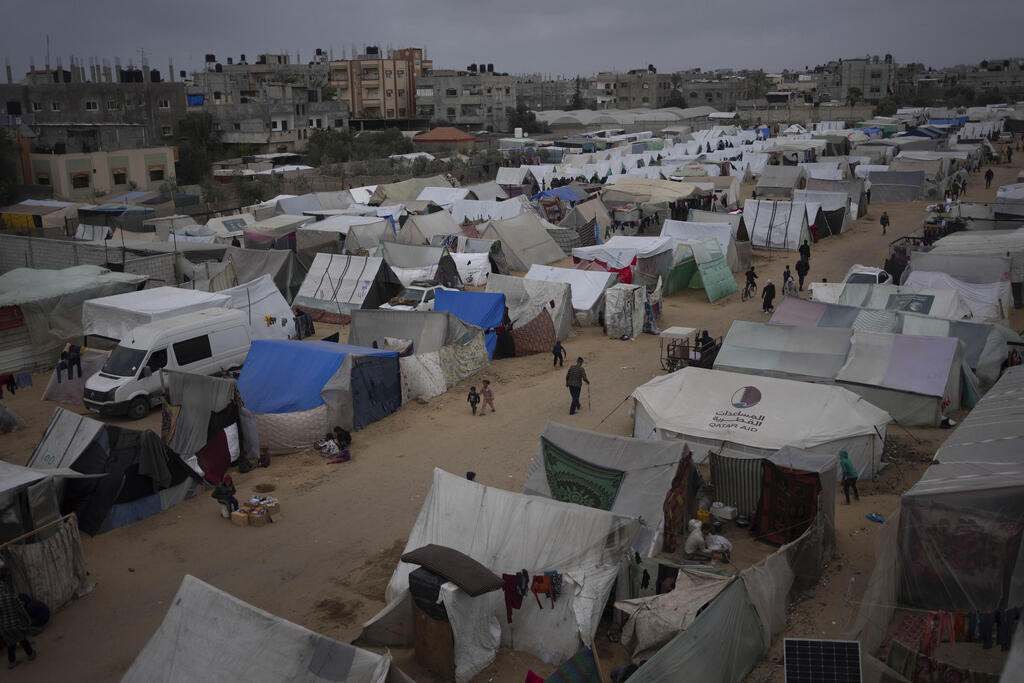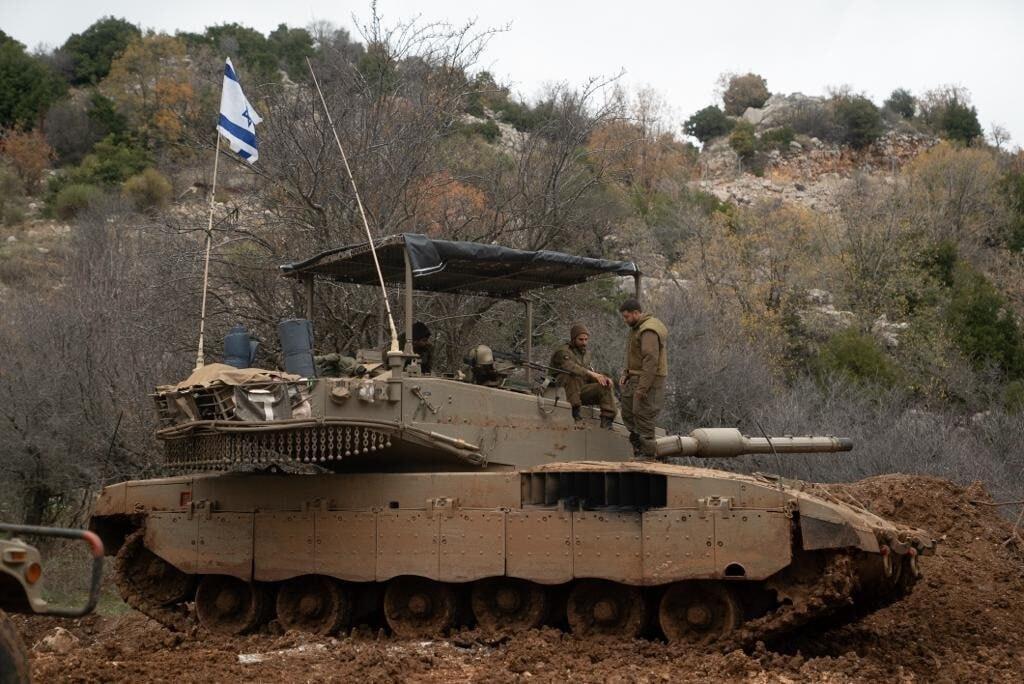Following the two devastating incidents in Gaza where no less than 24 IDF troops fell in one 24-hour period, the rift has grown between those who believe the fighting must persist until Hamas' eventual downfall and those who think it's time for Israel to cut its losses and end the war, returning all of the hostages back to their families. The latter obviously entails a somewhat painful understanding: There is no dismantling Hamas, boisterous coalition member sentiments notwithstanding.
Read more:
That said, there are reasons to be somewhat encouraged, as just last week, a senior IDF general said that out of the overall 24 battalions Hamas had at the beginning of the ground offensive, 17 have been brought to their knees, and only five are still fully operational, with the rest being somewhere in the middle.
Each of those contains some 1,500 Hamas operatives, some belonging to the elite Nukhba Force. Those vanquished by the IDF were mostly located in the Gaza Strip's northern section, with some around Deir al-Balah and Khan Younis. Those that are still involved in active conflict are being gradually reduced by the IDF's 98th Division. The main conflict right now is taking place against Hamas' Khan Younis company, known in the IDF to be the part of Hamas most closely situated to Yahya Sinwar and Mohammed Deif.
There is still some fighting going on in the northern section, though with relatively low intensity. These are mostly comprised of targeted raids that focus on specific locations derived from IDF interrogations of nabbed Hamas operatives. In the Netzarim Corridor, located around Wadi Gaza, the 99th Division is tasked with preventing refugees from making their way back north toward Jabaliya and Beit Hanoun.
But that shouldn't suggest that the area is a ghost town, as 200,000 Palestinians are still living there, trying to create some sort of daily routine, relying on aid trucks coming from the south to sustain them. While these are supposedly distributed by International aid organization, control over the process still rests with Hamas.
With about 70% of the Strip already under IDF control, many think it's a matter of time before Khan Younis and nearby enclaves share the same fate, but there is a factor slowing things down: The other 30% are in Khan Younis, Rafah and the Philadelphi Corridor, where the vast majority of the Palestinian population is currently located after the IDF told them to go there to escape fighting in other sectors. The last thing Israel needs is more civilian casualties, propping up the usual chorus of "Israeli genocide of Palestinians" by antisemitic loudmouths.
The IDF General Staff is very mindful of Washington's warnings about this sensitive issue, and are hard at work trying to come up with secure spaces to move the refugees to, so the military control of southern Gaza can be completed. This highly delicate task, made up of so many "highly flammable" moving parts, is allocated to the 98th Division.
One issue of note is the high number of prisoners taken and held from the Gaza population that did not attempt to flee, who are likely to serve as valuable intelligence sources in the ongoing Israeli effort to locate Sinwar and Deif. The closer the IDF is to them, the more likely they are to move with the hostages, clueing Israel to their exact location.
Some of the hostages have already paid the ultimate price, likely due to momentary rage from Hamas terrorists who have lost their friends on the battlefield; this despite the fact that Sinwar considers them as his main bargaining chip as it pertains to slowing down the Israeli war machine.
Tangible accomplishments
So what exactly did the IDF achieve, in ways that can be summarized and presented to an unconvinced populace, both here and abroad?
1) Number of rocket launches toward Israel has plummeted. Multiple sirens sounding off in central Israel has turned into one a week, if that. A huge number of Hamas launch pads have been decimated. Some still remain, though.
2) What was once the Hamas army has now been reduced to scattered companies and squads, scurrying about from one rabbit hole to the other, trying their best to cause as much damage to Israeli forces as they can, though as we saw with last week's RPG disaster, the damage can still be extensive. This incident further illustrates the need for a buffer zone between the enclave's eastern neighborhoods and Israeli kibbutzim on the other side of the fence. This buffer zone is designed to be cleared of any Palestinian movements, civilian or otherwise.
Reports indicate the zone in question is also creating a buffer, as it were, between the Israeli government and senior Washington officials. The Biden administration wants Israeli forces entirely removed from the enclave once the conflict is over, but Netanyahu has little faith in any sort of international arrangement that will involves the Palestinian Authority assuming control of civilian movement into the buffer zone.
Israel has quite the plan set up to control this area, significantly increasing the number of troops, both active duty and reserve, who will be ever-present in that area, which could facilitate a speedy return home for those evacuated from Gaza border region communities, perhaps as early as July.
3) Extensive intelligence acquired throughout the conflict allows the IDF to more accurately locate tunnels and weapons, but getting full control of all of it could take well over a year. It is not inconceivable that even if Hamas is completely terminated, smaller terrorist factions could still lurk about, ready to launch an attack by using tunnels the IDF hasn't located yet.
The day after
One can go on and on about IDF accomplishments, but what good are they without a post-war strategy to give them meaning? IDF generals are having a hard time planning further moves without knowing what the government plans for the Rafah area. This, of course, is not just an Israeli concern, but an Egyptian one as well. The Egyptian president has made it very clear he won't turn the Sinai Peninsula into a huge refugee camp for fleeing Palestinians and Muslim Brotherhood members whom he despises, and was even clearer about Israeli interference with the Philadelphi Corridor.
Speaking of the Philadelphi Corridor, less than 55 yards separate Rafah's southern homes in Gaza and the Egyptian controlled part of Rafah, rendering any ground maneuvering by the IDF extremely problematic.
But the biggest of all questions looms: During the two-year transitional period following a presumed Israeli victory, who will govern the population and how? Will Israel impose some sort of martial law, or will some American-Palestinian hybrid run the show?
And after that period is over, what then? Netanyahu has made it abundantly clear he has no intention of allowing the Palestinian Authority to assume control, believing it could lead to another October 7. Maybe a multinational force can be assembled, supervised by the United States.
Security officials are speaking of some sort of a quadruple mechanism, involving Israel, Egypt, the United States and civilian aid organizations who will impose a civilian structure over the enclave.
The Israeli premier is under Cabinet pressure to accept the American proposal to answer all of those questions, meaning a sort of Palestinian Authority 2.0 will be assigned control, and Gulf states will assemble some sort of Gaza Reconstruction Fund to help move things along and reacclimate the population back into their former homes or, rather, the new buildings that will be built in place of their former. now destroyed, homes.
Additionally, negotiations regarding a demilitarized Palestinian state will commence, with some sort of a corridor attaching the West Bank and Gaza and, perhaps importantly to Netanyahu, Saudi Arabia will agree to start a path of accelerated negotiations that will lead to normalization with Israel. The sticking point is U.S. insistence that Israel will not build a buffer zone before removing all forces from Gaza.
Security officials like this offer, as it relieves Israel of the financial burden of rebuilding Gaza, an undertaking that currently resembles a dystopian nightmare. It also means a disassembled Hamas, which will aid Israel's military objectives.
IDF Major General Ghassan Alian, who has been put in charge of examining these solutions, has begun contemplating the idea of inserting local officials into the civilian governance structure, a mechanism sorely lacking in areas such as Jabaliya, where Hamas has taken over all civilian duties. With partial results, these plans will soon be introduced to American eyes.
Rafah is the one piece still missing in the "completely surround Sinwar" puzzle. While the IDF acknowledges the cleanest way to bring about the release of the hostages is another deal, it is also recognized that capitulating to Sinwar by ending the military pressure and guaranteeing Israel will not go after any more Hamas officials, Sinwar would still hold on the highly valuable group of hostages he has, serving as collateral that Israel will stick to its obligations.
With that in mind, the War Cabinet is unwilling to engage with Sinwar's demand of ceasing all hostilities. The best they can do is agree to a temporary cease-fire of about 60 days or so. At this point, neither side is backing down and no meaningful developments can be reported at this juncture.
Chilly northern winds
All the while, IDF-Hezbollah skirmishes on the northern border have become a way of life, with neither side itching for war. Israel wants to wrap things up in the south before contemplating the idea of a war with Hezbollah, and the latter has an increasingly agitated populace to deal with, equally reluctant to take on Israel.
It's worth noting that the Americans also balk at the idea of a northern front, since they've got their hands full with the Houthis blocking maritime passages all over the Red Sea and Iranian-backed Iraqi militias giving them a hard time all over the Levant.
Perhaps the main reason Nasrallah isn't eager to go to war with Israel is because Iran doesn''t want him to. The Islamic Republic is playing the long game when it comes to control in the Middle East, and jumping into war with a nuclear state is a hasty move that could put a stick in the very wheels they're carefully cultivating.
Tehran is still invested in its nuclear ambitions, and the Islamic Republic plans to use Hezbollah as regional bodyguards should matters escalate both from the West and the Sunni alliance, desperate to prevent Iran from acquiring a nuclear missile.
The IDF can definitely chalk up some wins in the North, as they have forced Hezbollah to retreat its Radwan Force further away from the Israeli border, but Israel wants Resolution 1701 fully adopted, which means a demilitarized southern Lebanon. That is a sticking point Nasrallah isn't budging on, and Israel's northern residents are itching to go back home.
According to the latest reports, Israel has upped the ante by targeting specific Hezbollah and IRGC officials in both Lebanon and Syria. The messages to Iran are clear: You can't hide behind your regional proxies, and Hezbollah will continue paying the price as long as its forces are south of the Litani River.
That said, an article in the Hezbollah-affiliated Al-Akhbar newspaper estimated Hezbollah is equipped for war should the need arise. Some estimate Hezbollah will jump the gun and land a preventative strike, believing Israel is poised to attack, which might not even be true, but at that point it wouldn't even matter; The war would be on. Israeli security officials are very worried about this specific scenario and are having multiple discussions about it.
Either way, the battle on the northern front is not even close to over. Israeli may be looking at months of skirmishes, but Hezbollah has shown some willingness to an American-Saudi-Egyptian-Qatari-French settlement that will provide Lebanon with some much-needed financial aid, but this is conditioned on a new Lebanese president that will not be hostile to Hezbollah, as Nasrallah is craving a puppet to control in the Lebanese government.
The bottom line is this: the IDF is largely achieving its objectives, and now it's up to the political echelon to step it up. The problem is Netanyahu is eager to stall, tiptoeing between Joe Biden and Itamar Ben-Gvir, not willing alienate either one. This, in turn, is making Israelis lose patience with him. The girls who have refused to enlist this week, that were slated to be IDF lookouts, is a clear sign the people are losing patience with Netanyahu and his perceived inability to make a concrete decision.


